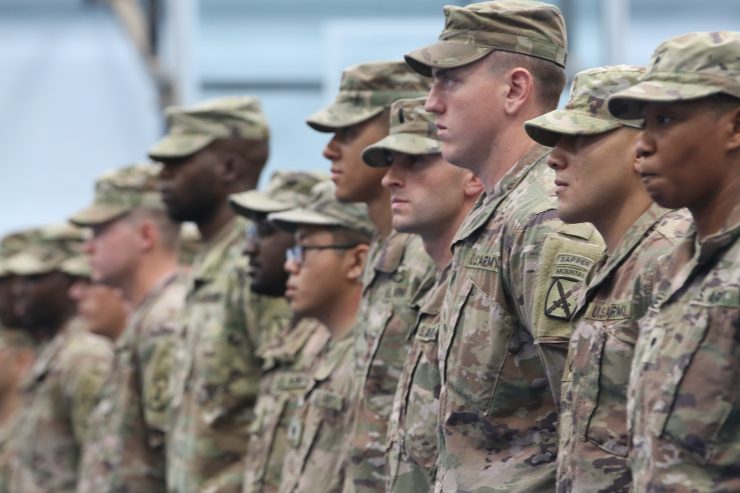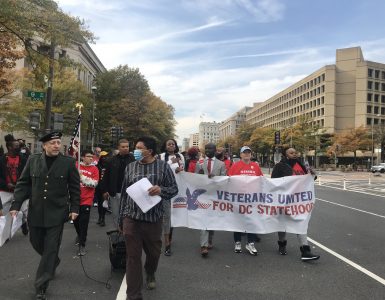As suicides continue to rise among those on active duty as well as veterans, the Department of Veterans Affairs launched a suicide prevention ad campaign Oct. 26, running the ads online and on television. Kim Burditt, who lost her brother to suicide after he retired from the Marine Corps, said the VA’s message is important, but suicide is “incredibly complex.”
“There’s no one fix that would intervene in a successful way every single time,” Burditt said.
The campaign, “Don’t Wait, Reach Out,” is part of the department’s response to an increase in death by suicide among military members, as reported by the Department of Defense in 2020. Despite the good intentions of the campaign, veteran resource groups outside the VA still believe the department could be doing more to support veterans’ mental health.
Burditt once worked for the VA in the hospice unit and now is senior manager at Tragedy Assistance Program for Survivors (TAPS), which helps family members of veterans who have died by suicide.
Burditt said that within the VA, it sometimes does feel like, “the left hand may not be in touch with the right hand,” and veterans need easier accessibility to available resources.
The DOD report showed an average of 17 veterans die every day by suicide, and the suicide rate increased 41.1% among active duty service members from 2015 to 2020. In 2020 alone, 580 members of the military died by suicide.
Rafael Reyes, assistant campaign manager of the Ad Council, partnered with the VA on the project. He said the campaign came about “to try to eliminate the stigma of reaching out for help.”
The campaign depicts real veterans at their most vulnerable deciding to seek outside assistance. All of the Public Service Announcements direct viewers to a portal on the VA website, where they can select which issues they face and receive individualized guidance to available resources.
Burditt said that within the VA, it sometimes does feel like, “the left hand may not be in touch with the right hand,” and veterans need easier accessibility to available resources.
The suicide rate among veterans in 2019 was 52% higher than among non-veterans according to a VA annual report. Reyes said the military culture hardens soldiers, creating a belief there is “weakness” in accessing mental health resources.
He said the campaign will help to “bridge the gap between the veterans who need resources, and create a place where they could come together and find everything in one place.”
COVID-19 and the war in Afghanistan have heavily affected veterans, said Diane McCall, who works as the Development Director at Mission22, an organization dedicated to providing resources to veterans and their families.
“It’s gone on so long, that they just feel more and more hopeless,” she said, and they struggle to seek the resources available to them.
McCall said the VA suicide prevention campaign could be extremely helpful but doubts it will reach its intended audience. She had not heard of the campaign until The Wash contacted her, even though it was released weeks earlier.
Burditt had also not heard of the VA campaign until The Wash contacted her. She said her husband, a veteran, has had good experiences with the VA but acknowledged that sometimes resources are hard to access “because of its complexity.”
Many of the veterans who speak with McCall no longer trust the VA, she said, because of continued negative experiences and miscommunications. Many of these veterans would likely never see the ad campaign and therefore not receive the services it offered.
“We hear veterans reach out to us and say, ‘My VA is great,’ and then we have other ones reach out and tell us that they don’t think their VA is worth anything,” McCall said. “So it would be nice to see some continuity between them, where they were all getting that amazing support that they needed.”
While the VA works to provide more mental health resources, McCall said she wants veterans to know that outside services, like those available through Mission22, existed.
Burditt said the VA needs to work on their PR campaign to regain the trust of some veterans. She said that this ad campaign is one way that they are attempting to become more accessible.
Reyes said that the campaign was designed to reach out to those who need it most, like young veterans and women. The DOD report inspired the campaign’s focus on young veterans after it reported 43% of active members who died by suicide in 2020 were between the ages of 20 and 24.
The VA also recognizes the importance of being accessible to veterans who re-enter civilian life but did not see combat or were not injured.
“[They] feel like they’re taking up space, and they’re not as deserving of help and services as other veterans,” Reyes said.
The VA will assess the initial success of the campaign as early as the end of this year, Reyes said. The ad campaign is projected to run for about a year, and Reyes hopes it will reach as many of the 23 million veterans in the U.S. as possible.











Add comment